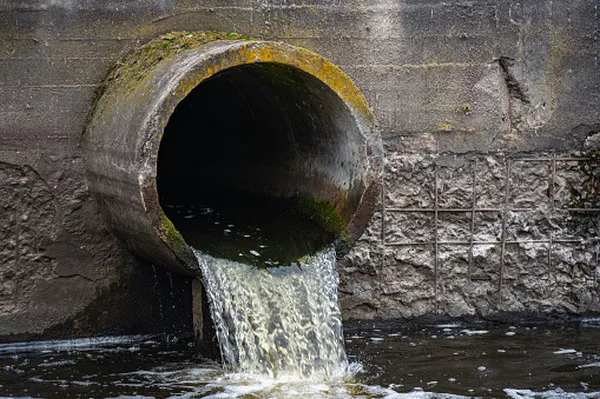Wastewater is a ubiquitous byproduct of human activity, encompassing a diverse range of liquid waste materials discharged from residential, industrial, agricultural, and commercial sources. As populations grow and urbanization expands, the generation of wastewater increases, posing significant environmental and public health challenges. Understanding the sources, composition, and production processes of wastewater is essential for effective management and mitigation strategies.
Sources of Wastewater:
Domestic Sources: Domestic wastewater, often termed sewage, originates from households and includes water from toilets, sinks, showers, and kitchen appliances. It typically contains organic matter, pathogens, nutrients (such as nitrogen and phosphorus), and various chemicals from household products.
Industrial Sources: Industries produce wastewater through manufacturing processes, cleaning operations, and cooling activities. Industrial wastewater varies widely in composition, depending on the sector, and may contain heavy metals, solvents, oils, and other pollutants specific to the industry.
Agricultural Sources: Agricultural activities contribute to wastewater generation through irrigation runoff, animal husbandry, and the use of fertilizers and pesticides. Agricultural wastewater can contain high levels of nutrients, pesticides, and pathogens, posing risks to water quality and ecosystems.
Commercial Sources: Commercial establishments, such as restaurants, hotels, and laundromats, generate wastewater from daily operations. This wastewater may contain grease, detergents, chemicals, and food waste, necessitating specialized treatment before discharge.
Stormwater Runoff: Rainfall and snowmelt can pick up pollutants from various surfaces, including roads, rooftops, and agricultural fields, resulting in stormwater runoff. This runoff, often contaminated with sediment, debris, and chemicals, contributes to urban and rural wastewater loads.
Composition of Wastewater:
The composition of wastewater is highly variable and influenced by its source, location, and treatment processes. However, several key components are commonly found in wastewater:
Water: The primary constituent of wastewater is water, which carries dissolved and suspended substances from its source.
Organic Matter: Wastewater contains organic compounds derived from human waste, food residues, and other biodegradable materials. These organics serve as substrates for microbial activity during treatment processes.
Nutrients: Nutrients like nitrogen and phosphorus are present in wastewater, originating from human excreta, detergents, fertilizers, and organic matter decomposition. While essential for life, excess nutrients can lead to eutrophication and water quality degradation.
Pathogens: Wastewater may harbor various microorganisms, including bacteria, viruses, and parasites, posing health risks to humans and ecosystems if not adequately treated.
Chemicals: Industrial, commercial, and household activities introduce a plethora of chemicals into wastewater, including heavy metals, pharmaceuticals, pesticides, and synthetic compounds. These chemicals can persist in the environment and bioaccumulate in organisms.
Suspended Solids: Wastewater often contains suspended solids, such as soil particles, organic matter, and debris, which can degrade water quality and impede treatment processes.
Production Processes:
The production of wastewater involves a series of interconnected processes, from generation to treatment and disposal:
Generation: Wastewater is produced continuously from various sources, as outlined earlier. The volume and characteristics of wastewater depend on factors such as population density, industrial activities, climate, and infrastructure.
Collection: Wastewater is collected through sewer systems, which may be separate (carrying sewage and stormwater separately) or combined (transporting both sewage and stormwater in the same system). Sewers convey wastewater to treatment facilities for processing.
Preliminary Treatment: Upon arrival at a treatment plant, wastewater undergoes preliminary treatment to remove large debris, grit, and solids through screening and grit removal processes. This step prevents damage to downstream equipment and minimizes the risk of clogging.
Primary Treatment: In primary treatment, wastewater undergoes physical processes, such as sedimentation and flotation, to separate suspended solids and organic matter. Gravity settling allows heavier particles to settle to the bottom as sludge, while lighter materials form a floating scum layer.
Secondary Treatment: Secondary treatment aims to further reduce the concentration of organic matter and pathogens through biological processes. Microorganisms, such as bacteria and protozoa, break down organic compounds into simpler forms through aerobic or anaerobic digestion. This step often involves the use of activated sludge, trickling filters, or constructed wetlands.
Tertiary Treatment: Tertiary treatment is employed to improve effluent quality beyond what is achievable with primary and secondary processes. Advanced techniques, such as filtration, chemical coagulation, and disinfection, are utilized to remove remaining contaminants, including nutrients, pathogens, and trace pollutants.
Disinfection: Before discharge or reuse, treated wastewater undergoes disinfection to kill or inactivate harmful microorganisms. Common disinfection methods include chlorination, ultraviolet (UV) irradiation, ozonation, and membrane filtration, ensuring that the effluent meets regulatory standards for public health protection.
Disposal or Reuse: Once treated, wastewater can be safely discharged into receiving water bodies or reused for non-potable purposes, such as irrigation, industrial processes, and groundwater recharge. Efforts to promote water reuse and resource recovery help mitigate freshwater scarcity and reduce environmental impacts associated with wastewater disposal.
See Also What Is Sewage Water Called After Treatment
Conclusion:
Wastewater is a complex and dynamic substance generated from diverse human activities, presenting challenges and opportunities for environmental stewardship and sustainable development. By understanding the sources, composition, and production processes of wastewater, stakeholders can implement effective management practices, technological innovations, and regulatory frameworks to safeguard water resources and public health. Through collaborative efforts and holistic approaches, we can achieve the goal of a cleaner, healthier, and more resilient environment for present and future generations.

